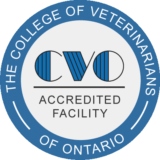Keys to Managing Lame Cows
By: Dr. Megan Jamieson
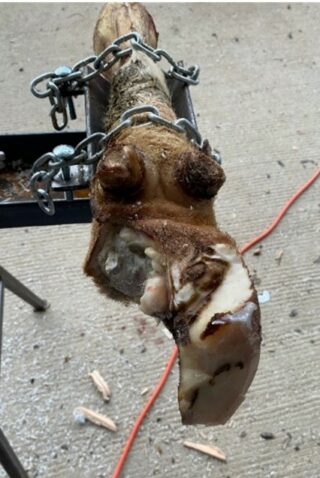 This past month, Dr. Megan travelled to Knoxville, Tennessee to attend the AABP Recent Grad Conference and participate in a preconference seminar covering bovine lameness treatment and protocols. Here are a few of the important takeaways:
This past month, Dr. Megan travelled to Knoxville, Tennessee to attend the AABP Recent Grad Conference and participate in a preconference seminar covering bovine lameness treatment and protocols. Here are a few of the important takeaways:
- Early detection of lameness is CRITICAL. Chronic cows can have irreversible changes to the internal foot. It is recommended to check cows frequently for any signs of lameness (which can be as subtle as a shortened stride length). ANY limp is abnormal and should be investigated.
- Leaving foot blocks on for longer than 4-6 weeks can cause an ulcer to develop underneath the block.
Common foot diseases we see in our practice area:
Sole Ulcers:
- Treatment: pare out loose horn + block on healthy toe + NSAIDs
- NO topical powders or sprays should be put on an exposed sole ulcer. It is irritating/caustic and can delay healing.
White Line Disease:
-
- Treatment: remove loose horn (to close the sole defect ASAP) + block on healthy toe + NSAIDs. The ultimate goal is to prevent chronic cows from developing irreversible bony changes.
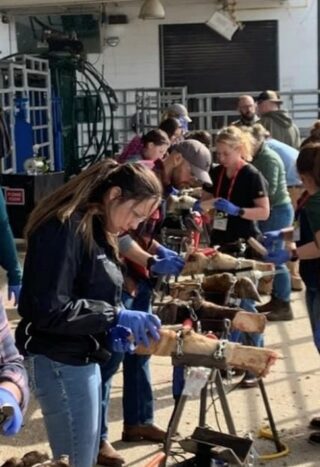
Septic Arthritis/Joint infection:
- Will usually cause ASYMMETRIC swelling (only in one toe) and significant lameness.
- Usually starts as an ulcer, white line defect or direct trauma.
- Systemic antibiotics are only useful in MILD cases. In severe cases where swelling is apparent, systemic antibiotics or regional limb perfusions are NOT helpful. Severe cases can have the affected claw amputated to get the animal to culling.
Foot rot/Strawberry/Digital Dermatitis/Hairy Heel Wart:
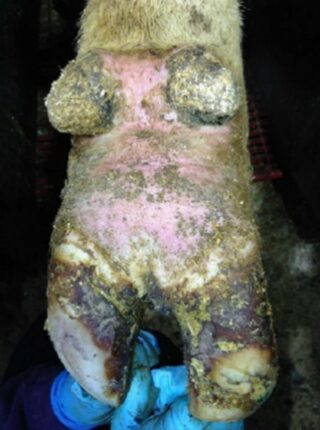
- These are all names for the same disease process, just at different stages or areas affected.
- It is one of the only things to cause SYMMETRICAL swelling in the foot. Tissue can also appear red and be extremely painful to touch.
- Best treatment is early TOPICAL treatment. Cyclospray or 2g (1/2 tsp.) of tetracycline powder made into a paste are appropriate treatments. There are studies that now show foot wraps don’t significantly speed healing time. The topical treatments kill the pathogens in seconds. More severe cases can get Excenel (dairy) or Oxyvet (beef).
- **These pathogens are very responsive to antibiotics. So, if there is no improvement in 24-48 hours after treatment – IT IS LIKELY NOT FOOTROT and the cow’s foot needs to be reexamined**
- These pathogens will encyst/hide deep in the foot tissue and likely cause a reoccurrence in affected cows. This is why footbathsare important. It will prevent those deep hiding pathogens from causing disease again.
Welcome Dr. Madi McArthur!
We are thrilled to announce that our UGVS team is growing, we are excited to welcome Dr. Madi McArthur to our team this upcoming May! Some of you may recognize Madi as she has done externships with us. Madi discovered a passion for animals and agriculture at a young age spending time on her grandfather’s farm. Through her time at the Ontario Veterinary College, she discovered a passion for bovine reproduction and obstetrics. She’s most looking forward to working alongside the Upper Grand Vets team to provide exemplary care to livestock species and to meeting all the wonderful clients that Upper Grand serves! In her free time, you’ll find her trying out a new recipe, hiking with her dog, Boris, or spending time with her family.
 Are you following us on Facebook?
Are you following us on Facebook?
Is there something you would like featured on our Facebook? Send us an email at reception@uppergrandvets.ca or Let a member of our team know!


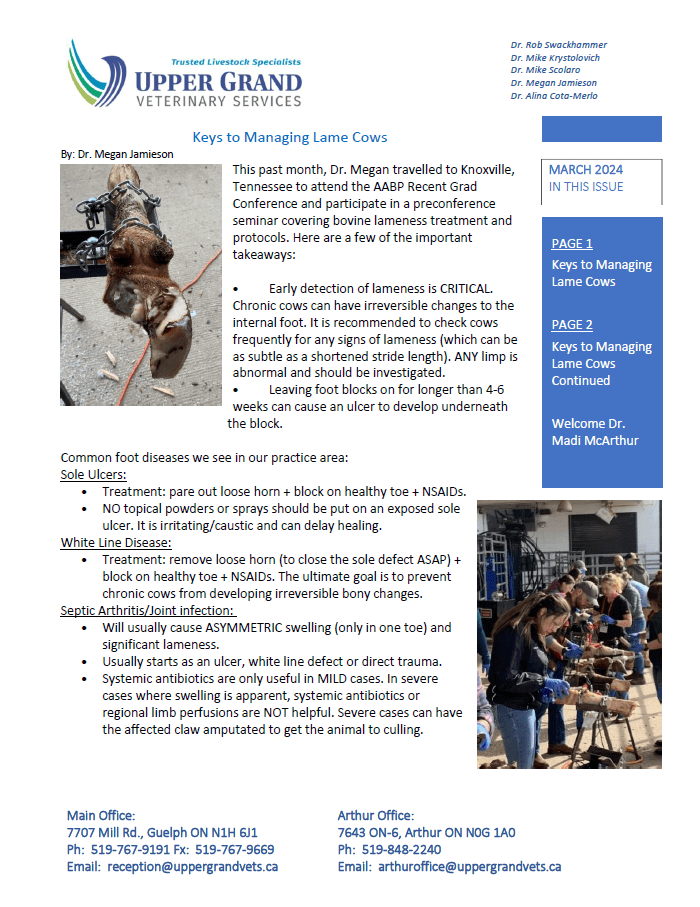
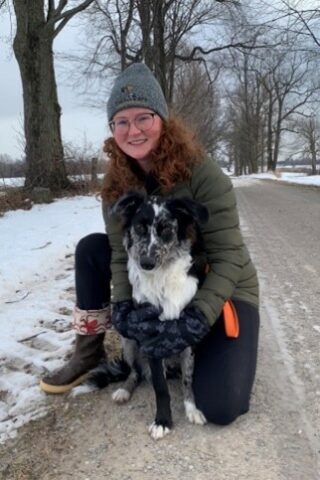
 Are you following us on Facebook?
Are you following us on Facebook?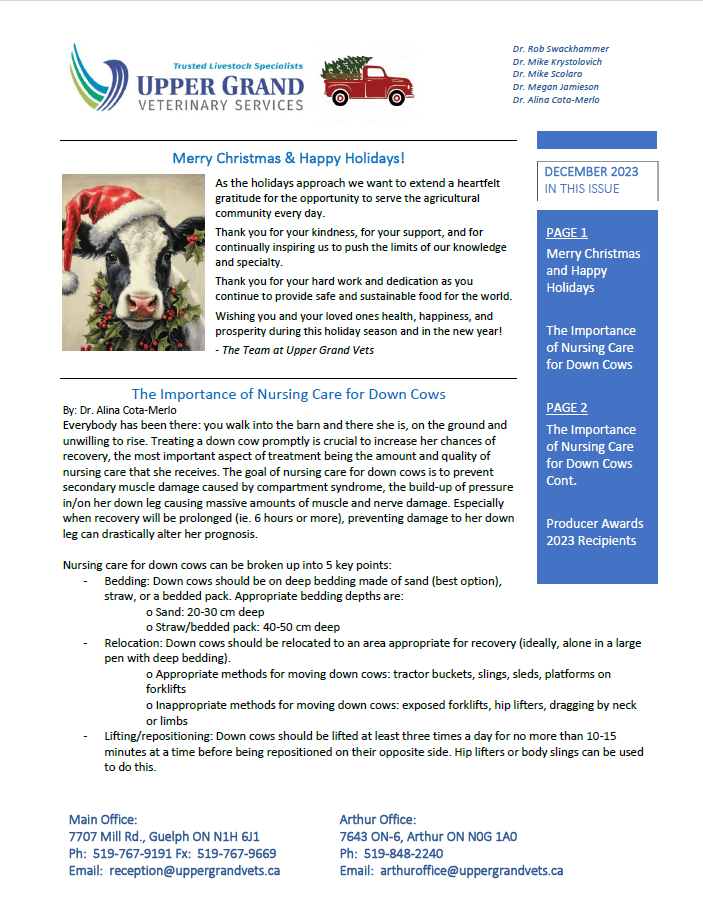
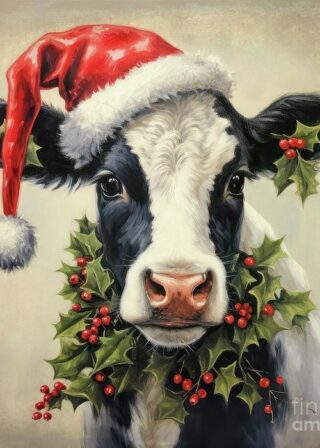 As the holidays approach we want to extend a heartfelt gratitude for the opportunity to serve the agricultural community every day.
As the holidays approach we want to extend a heartfelt gratitude for the opportunity to serve the agricultural community every day. The Importance of Nursing Care for Down Cows
The Importance of Nursing Care for Down Cows

